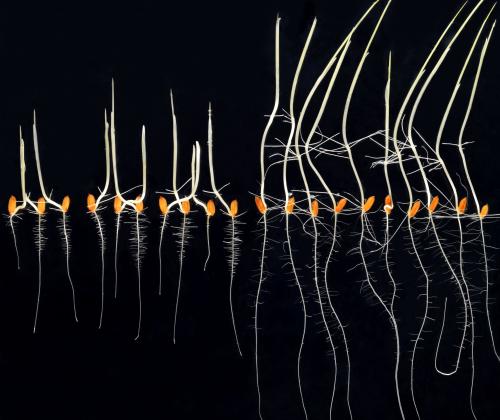United Kingdom
February 13, 2025

Scientists at Rothamsted have developed a novel mathematical model for seed germination. The new tool is derived from field data and marks a significant improvement in accuracy over previous models.
Germination models use water and temperature as the main drivers of seed activity. Currently these are based largely on water potential, which is the energy that drives water to move from one system to another. This is challenging to record accurately in the field. The new model uses water content which is much easier to measure.
These models are essential to the seed industry as it is important to develop lines where each individual seed germinates at roughly the same time and grows uniformly. This is particularly important for crops like carrots or onions where having similar sized plants makes them more profitable.
Seed suppliers must therefore test seed samples to ensure a certain germination rate is met, a process that is difficult and time consuming. So modelling is used to assess each batch based on a given sample.
However, current models do not always accurately reflect field conditions.
That is where the new model comes in. Water content is much easier to measure accurately in situ than the drivers of water potential. That makes the new model far more likely to accurately predict germination times in field situations.
“This is the first time a germination model has been able to be developed using field data,” said Dr Xiaoxian Zhang, corresponding author of the new study. “Seed germination is a crucial stage in plant development, intricately regulated by various environmental stimuli. Understanding these interactions is essential for optimizing planting and seedling management but remains challenging due to the trade-off effects of environmental factors on the germinating process.”
The research team created a new model by viewing seed germination as a dynamic process. To validate the model, they conducted field experiments by drilling wheat seeds at different dates to establish a temperature gradient and in different plots to create a soil water content gradient.
Comparisons between the experimental data over a period of seven years and calculated results show that the model accurately reproduces all germination patterns and the subsequent seedling tillering with a 95% fit.
“In germination there a trade-off effect of soil water on bioavailable water and oxygen. Introducing a physiological dimension enables seed germination and the subsequent tillering process to be modelled as a continuous physiological process, providing deeper insight into plant growth dynamics,” said Zhang.
“We believe this new approach offers a genuinely new approach to germination modelling and for the first time takes on tiller number. We also hope that it will be more stable than the hydrothermal time models and hence more useful for field application,” he added.
Publication
A new conceptual model for seed germination and seedling tillering of winter wheat in the field